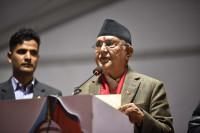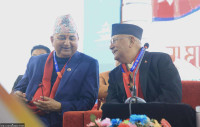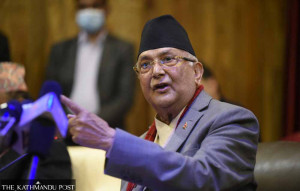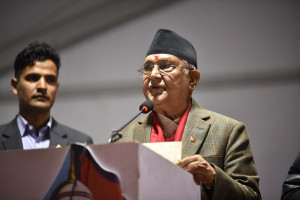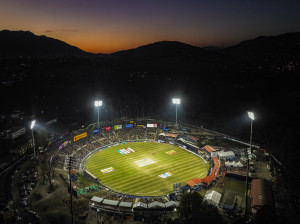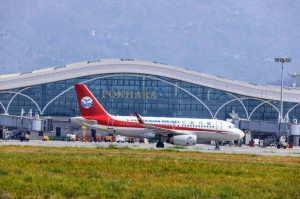Editorial
Use the spotlight
Nepal has gained rare visibility in international climate circuits. It must not fail to capitalise on it.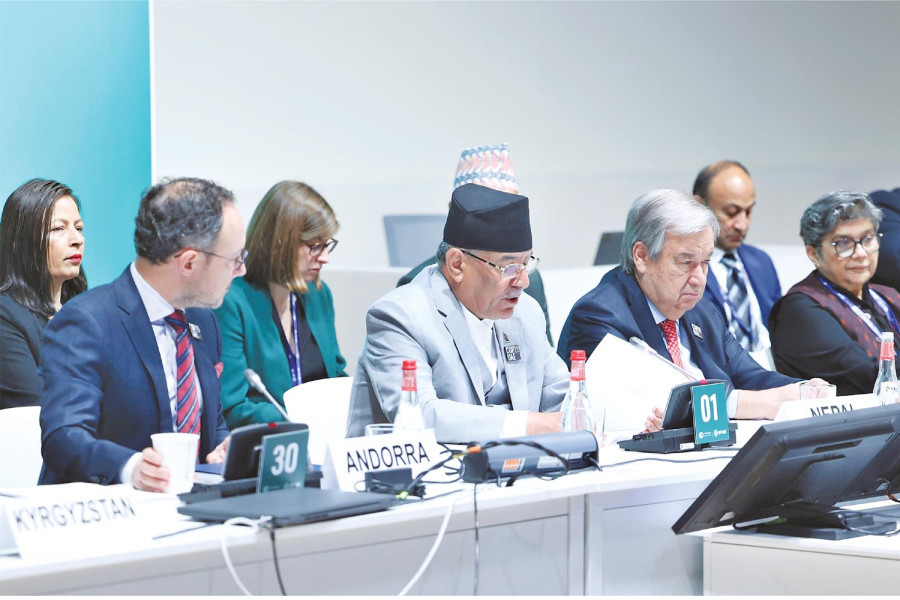
Nepal, one of the most climate-vulnerable countries in the world, has lost nearly a third of its glaciers in the past 30 years—65 percent faster between 2010 and 2019, than in the previous decade. When global warming is measured at 1 degree Celsius, on average, the country’s mountain regions have seen temperature rise of up to 1.8 degrees. Weather patterns here have been unpredictable, with natural disasters like floods, landslides and glacier lake outbursts taking or disturbing countless lives.
Amid these depressing developments, the United Nations Secretary-General António Guterres’ October visit to Nepal to witness the impact of climate change on the Himalayas and its people buoyed many. As a result, the Himalayan country, for the first time, had its own pavilion at the 28th Conference of the Parties (COP) to the United Nations Framework Convention on Climate Change (UNFCCC) in Dubai, UAE. In a high-level roundtable discussion—“Call of mountains: Who saves us from the climate crisis”—chaired by Prime Minister Pushpa Kamal Dahal in Dubai, Guterres reiterated the gravity of the crisis Nepal faces, “...[The country’s] mountains are crying out for help and COP28 must respond,” he said. Dahal also carried the common cry of Nepalis: “Mountains are tortured by rising temperatures. Save them first.” This global spotlight is, indeed, a huge achievement for the country. But that is nearly not enough, with domestic political and implementation challenges galore.
In the past, political instability in Nepal halted the implementation of nationally determined contributions (NDCs) or climate action plans. The second NDC’s implementation plan was approved only this year after being stuck in the cabinet for over three years (from 2020-23). By 2025, the countries are expected to update their NDCs, which is difficult to do credibly in an unstable polity like ours.
This COP, developing countries have won the loss and damage grant for which they had long fought. The UAE and Germany have pledged $100 million each. That’s a start. (The annual adaptation finance needed to implement domestic adaptation priorities for affected countries is estimated at $387 billion.) This is positive news, but the loss and damage grant should not prevent Nepal from making its own investment to mitigate the effects of climate change. It should also devise funding modalities for local communities that are neglected in climate priorities as climate policies tend to be centralised.
The absence of Chinese President Xi Jinping and US President Joe Biden in Dubai spoke volumes. They are the world’s biggest greenhouse gas emitters. While China’s global emissions were responsible for 14.1 billion metric tons (27 percent of total emissions) share of global emissions in 2019, the US emitted 5.7 billion tons (11 percent). Nepal contributes a negligible 0.1 percent; however, it suffers the most, necessitating a firm stance from the country’s leaders and robust negotiations with the big emitters. The goal is to get them to cut emissions and cap temperature rise to 1.5 degrees, as was agreed in Paris in 2015.
The Himalayas are indeed “crying out for help”, and only a timely response can save them. The commitments made at COP28 should be translated into action, and expedited through short-, mid-, and long-term implementation plans. It is up to the country’s leaders to uphold its climate goals credibility through strong and credible negotiations. This entails asking for compensations for loss and damage, regular follow up on pledges made by polluting countries, and seriousness in its own climate commitments. That is the only way to ensure that we leave behind a habitable Nepal for future generations.




 18.12°C Kathmandu
18.12°C Kathmandu